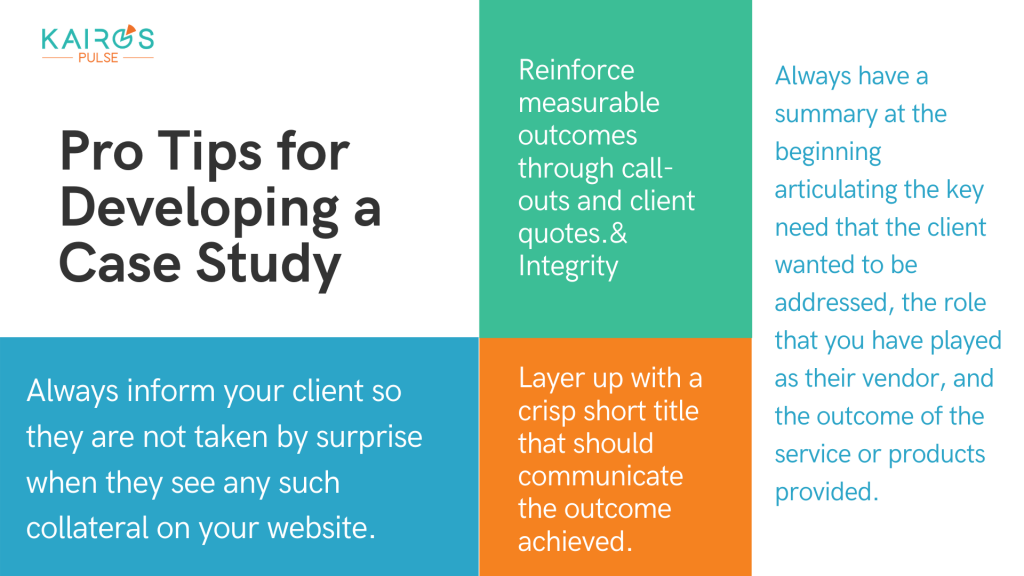Do marketers need case studies? Yes. Are case studies effective tools of marketing? Yes. Do case studies always work? No.
Case studies are a great way to inform people about the benefits of using your product or services. They are more detailed than simple testimonials. They’re a real-life glimpse into how you met your customer’s needs. Good case studies are excellent to bring in new customers. But, because of their detailed nature, they often end up being dull and boring. Even more so now, when people have far too many options and very little time to spare. So how do you make sure your case study is effective, attractive and successful? Here are some tips to make your case study a powerful asset in seeking new business.
Introduce your client – If you’re making the case study for a client, do your homework on the client and research them thoroughly. Give a short but precise background on them and their core businesses. Highlight their successes and standing in the industry. Show that your client is well-versed with the ins and outs of the industry so that potential customers have faith in your client.
Choose the right subject/candidate for your case study – Selecting the subject of your case study is an extremely crucial step. Potential customers should be able to identify with them. Some may even do a fact check so it is important that you have someone reliable and credible, who would vouch for you and be willing to be an active participant of the process. They must also have a thorough understanding of your product or service. Should a potential customer reach out, you want them to get a satisfying and raving review about your product.
Try to feature businesses/candidates with a strong existing brand identity to draw more attention and add more credibility in the eyes of your potential customer.
Format your case study like an easy-to-follow story – People love a well-told story. It is easy to grasp information that flows in an A to B to C sequence of events. Through this story, the potential customer should get easily familiarized with the client, their product or service, the subject of the case study, and how the client was able to address specific challenges. It should also reflect the needs of end-users, and how the client’s offering caters to them specifically. Lay down the whole process, including all actors in the story. Keep in mind the following (and in the order given) to give structure to your case study and cover all your bases.
- Who is the end-user and what do they do?
- What was the requirement that brought the client and end-user together?
- What were the end-user’s goals and expectations?
- What was their problem and how was it affecting their business?
- How did your client help the end-user reach their goals? What was the process like?
- What was the methodology and solution offered? Make sure to explain what the client did very clearly, step by step.
- What obstacles were faced and how did your client overcome them?
- What were the direct results of your client’s association with the end-user? Numbers and statistics are a great way to show these results. Include both quantitative and qualitative (e.g. direct quotes) data to prove your results.
- Give a before and after scenario for the end-user (what were they doing before your client stepped in and how did that change later?)
The Visual Aspect – Now that you’ve built the perfect narrative, you have to refrain from getting too wordy. Use content formatting elements like headers, images, bullets, lists, bold and italicized text. These provide fabulous SEO value for your case studies web page, and are especially meant for readers who like to quickly grasp the key facts of your case study.
Also use real, authentic figures/numbers to strengthen your case study. Instead of saying ‘sales were doubled’ try to show by how much. Numbers provide a much clearer and stronger impact. Highlighting the important facts helps the reader see the message you’re delivering. It certainly helps those who are new to the industry.
While some people enjoy reading, others may prefer audio, video, or visual representation. You could dabble with podcasts, infographics or videos to widen your reach. This way you’re accessible to all kinds of people and even non-specific customers.
Choose the style, tone and format depending on the specific prospective customer you may be targeting.


